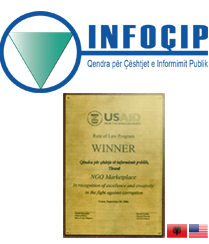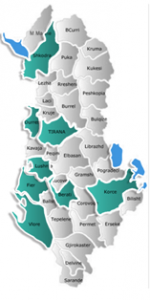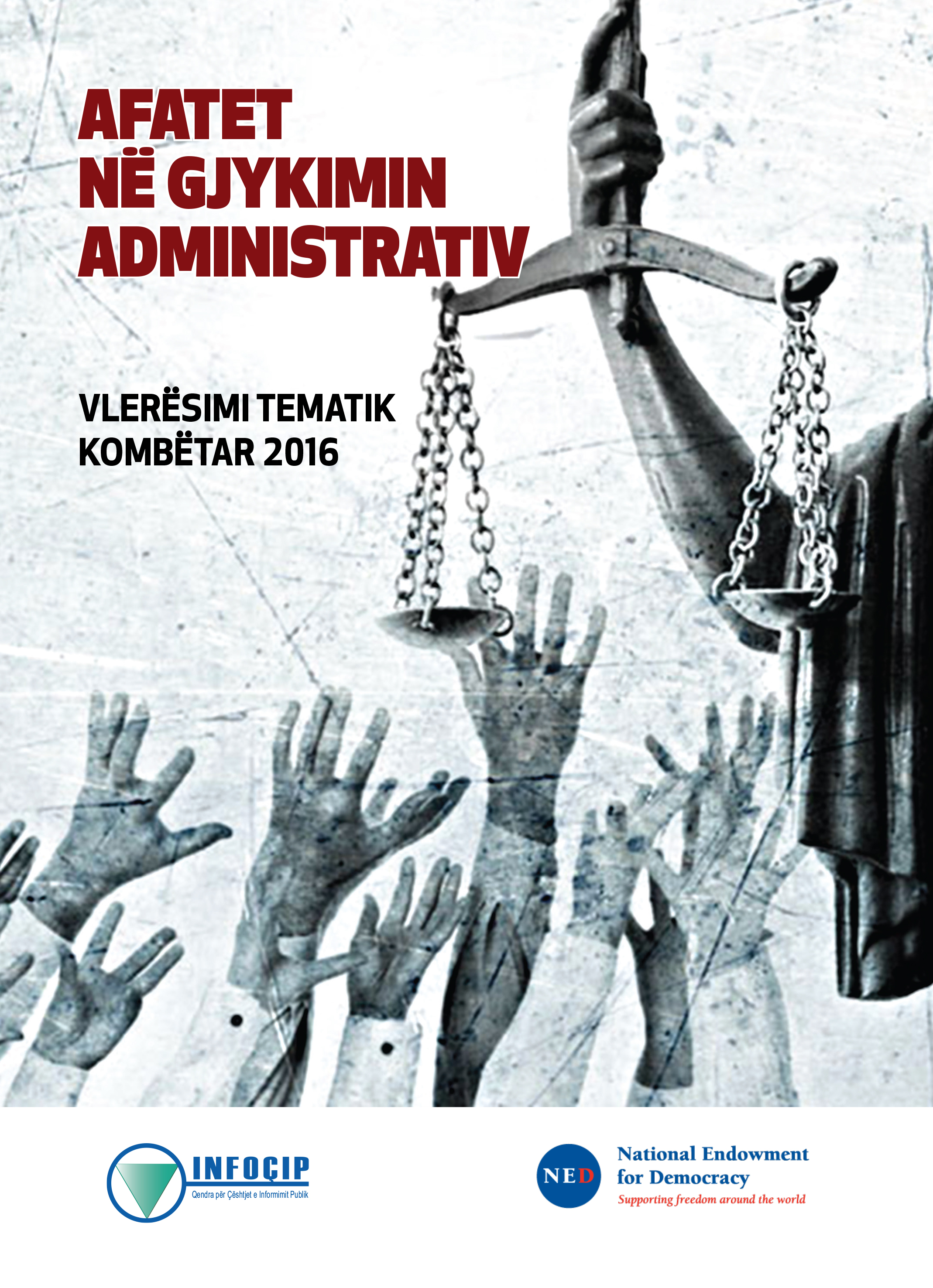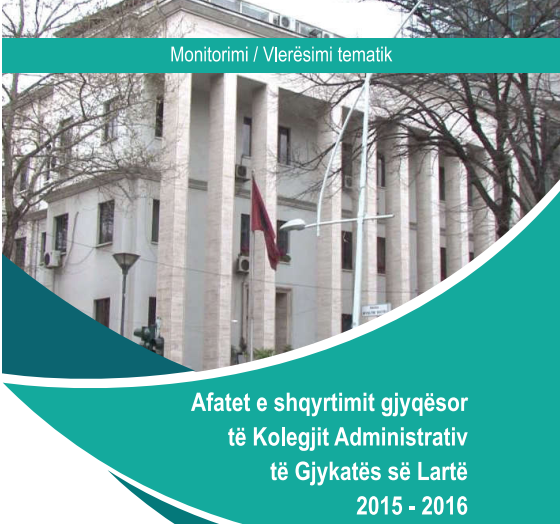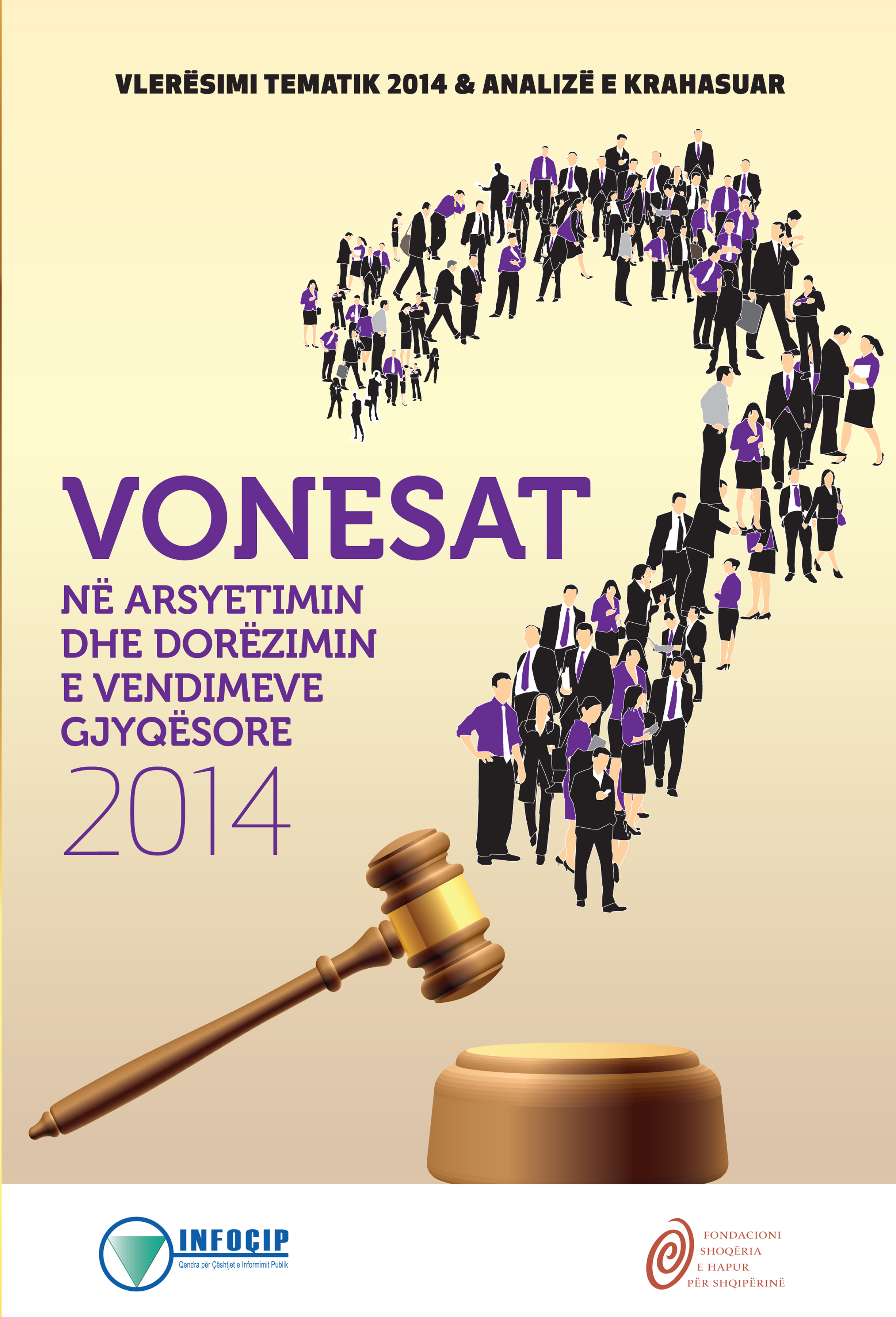Head of Council of Europe, Neukirch addresses the National Conference on Administrative Courts: INFOCIP has done excellent job in court data processing
INFOCIP organized on December 15, 2017 the National Conference on “Administrative Judicial Review and Effects of Reform in Justice”. In addition to the President of the Republic, Mr. Ilir Meta and all the judicial bodies present, the Conference was attended and addressed by international organizations and missions that assist the Albanian justice system.
The honorary guest to address this conference was the Head of the Council of Europe in Tirana, Mr. Claus Neukirch. In his greeting speech he emphasized the importance of increasing the efficiency of courts. He also stopped at the work that the CoE has been doing through its programs to achieve the significant objectives of reducing the time of the judicial review, including the administrative courts themselves.
He said that INFOCIP has done an extraordinary job of collecting and processing judicial data, which now offers a detailed view of the length of judicial review of each issue decided in 2016. “These data undoubtedly help judges evaluate themselves, help court presidents address important issues, and help policy-makers adopt the right legal framework to further improve issues that are identified by the INFOCIP’s Thematic Evaluation, said Mr. Neukirch.
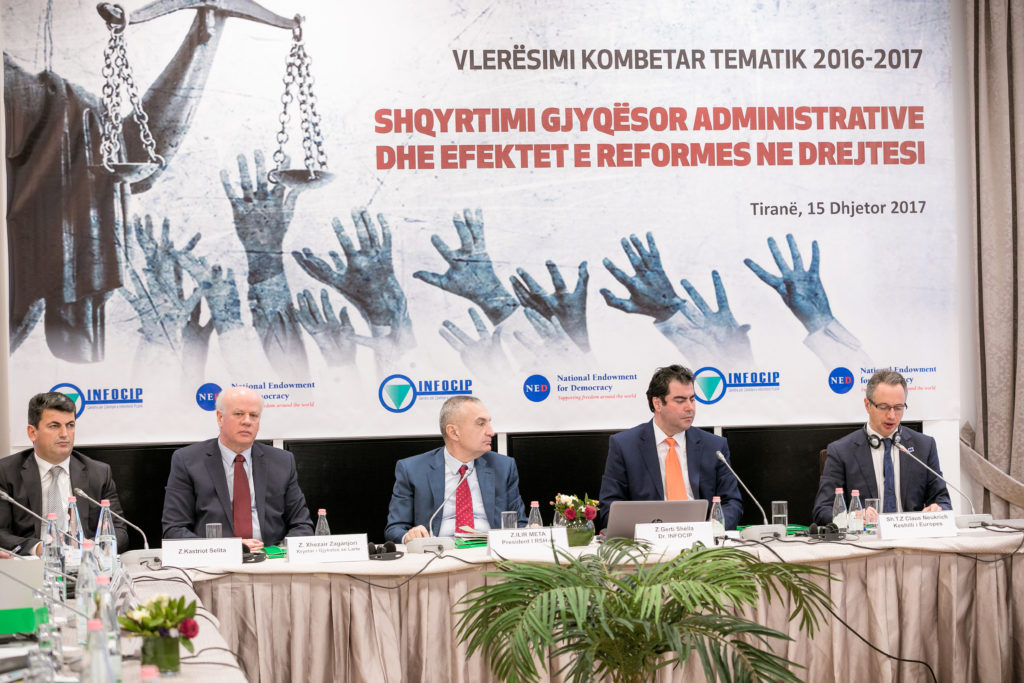
Full speech of mr. Claus Neukirch, Head of the Council of Europe, Albania
Honorable President of the Republic, honorable Chief Justice, honorable Judges, Excellencies, Dear Mr. Shella, dear participants,
Please allow me to thank INFOCIP very much for the initiative for this pertinent and timely event and the kind invitation to the Council of Europe to contribute.
The Council of Europe is currently implementing several projects in the framework of Horizontal Facility for Westerns Balkans and Turkey, a joint initiative co-funded by the European Union and the Council of Europe to assist beneficiaries in the region to comply with Council of Europe standards and European Union acquis in the framework of the enlargement process.
One of them, concerns the Strengthening of the Efficiency and Quality of Justice System in Albania – SEJ II. The overall objective of this activity is to increase the efficiency and quality of the justice system in Albania through implementation of tools developed by the European Commission for the Efficiency of Justice – CEPEJ. And many if not all of the judges present here today are well aware of these tools. The goal of our work in the justice field in Albania is to align the Albanian justice system to EU standards, CoE recommendations and case law of the European Court of Human Rights related to the length of proceedings. We do this through the SEJ II project as well as through another project on the implementation of judges and through the Venice Commission which has provided valuable support for the justice reform and stands ready to provide further advise to the Constitutional Court and Parliament if requested.
Albania established Administrative Courts with the goal of reducing the backlog of cases related to administrative issues. Reducing this backlog would have resulted in the improvement of the efficiency and quality of the justice system.
However, I think we see today that this goal has not been fully achieved. The issue of backlog not only is not resolved, there are also continued challenges with regard to the implementation of the respective law itself – this concerns in particular the respect of time-limits set in the law.
The main issue here is that justice delayed is justice denied. A backlog of over 20,000 administration cases means at least 20,000 individuals have not seen justice so far as their cases are still hanging in the system.
INFOCIP has done a tremendous work in collecting the data from all administrative courts and providing a picture of detailed length of proceedings for each case adjudicated during 2016. These data obviously help judges to self-evaluate themselves, help court presidents to issue appropriate internal judicial targets, and policy-makers in adopting the right legal framework to further improve the situation by identifying the issues therein.
Data collection for the purpose of analysis and reporting of the judicial statistics is also the cornerstone of SEJ II Action. However, the process of collection, analysis and reporting of the judicial statistics continues to face major challenges 1) a case electronic system used by most courts in Albania (ICMIS) does not function as good as it should be, 2) courts lack staff to put all required data related to each case, and load onto the system the final decisions, and 3) the whole justice system lacks a unified IT system for reporting of judicial statistics in line with CEPEJ tools and methodology, EU standards and CoE recommendations. Such an IT system, should enable to shorten the life cycle for submitting and processing judicial data. It is important to note that good practices of other countries should also be used as a model for improving the justice system in Albania for judicial statistics and judicial time management.
In fact, if all these 3 noted issues I noted were to be fully implemented, INFOCIP or other NGOs as well as private citizens would not have to go through the process of asking the courts via the Freedom of Information Act for information that could easily be available on courts website which has to do directly with statistics.
The accuracy of the judicial data is very important for the courts to make the appropriate decisions and setting internal targets for shortening the length of proceedings.
CEPEJ uses two key tools in this regard:
- GOJUST guidelines which assist the courts in improving the collection, analysis and reporting of judicial statistics
- SATURN guidelines on judicial time management which will enable the courts to set proper internal targets and shorten the length of proceedings as a result
I will not dwell on the details of these guidelines, but just would like to emphasize that every court should collect data regarding the timeframes of proceedings that are taking place in the court. Pending and completed cases within the period (e.g. calendar year) should be separately monitored, and the data on their duration should be split in the groups according to the periods of their duration. The monitoring of timeframes should not be limited to the collection of data regarding total timeframes between the start and the end of the proceedings. Information on duration of intermediate stages of the proceedings should also be collected. The data on duration of appeals proceedings, or duration of other legal remedies should also be available.
CEPEJ uses the following indicators for getting a clear picture of the situation in a particular court or in all courts. Only in this way, we are able to compare the efficiency of courts with each-other in the most accurate way.
- Clearance Rate (CR) – ie the relationship between the new cases and completed cases within a period, in percentage.
- Disposition Time (in days and in years): comparing the number of resolved cases during the observed period and the number of unresolved cases at the end of the observed period.
- Case Turnover ratio: ie the relationship between the number of resolved cases and the number of unresolved cases at the end.
There are other indicators that we encourage the courts to use internally for their own-making decisions, such as: the efficiency rate, backlog resolution or cases per judge.
A comprehensive set of indicators is important to take into account also factors such as complexity of a case when assessing the workload for each judge in a particular court. CEPEJ tools take into consideration all elements needed to give a proper picture of the justice system.
Finally, allow me to emphasize the importance of inclusion of CEPEJ tools and methodology in the analysis of data. Data collection without analysis is like a stock of non-processed raw materials. We encourage not only courts, the Ministry of Justice and the High Council of Justice to analyse the data, but also Civil Society should do so, in order to enable it to come up with concrete recommendations on these issues.
We are most happy to share with you the statistics our SEJ II action has collected and analysed. They give in our view a good picture of the situation in all administrative courts in Albania for the last 3 years (2014-2016) where we used most of the CEPEJ indicators I mentioned. I hope very much you will find them useful.
Thanks you very much for your attention and allow me to wish you a good and fruitful exchange in the course of this event.

LAST RELEASED PUBLICATION
MONITORING REPORT
Recent reports/studies
Partners / Donors
Local Branches
- Citizens' Transparency Office, Durrës (19)
- Citizens' Transparency Office, Korça (9)
- Election Situation Chamber (11)
- JUDICIARY (1)
- NED (11)
- www.vendime.al (5)
Foto lajm

- CPII anounces the monitoring result for Durres Municipal Council. It must be re-elected
Where we work

